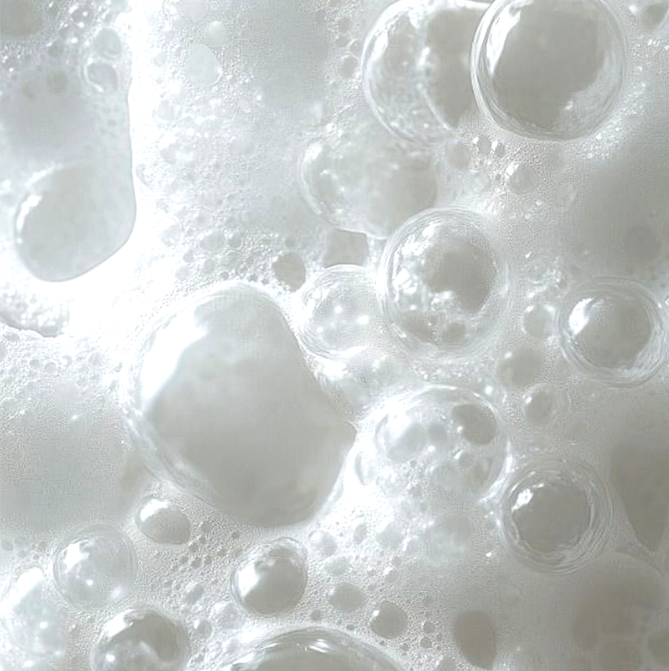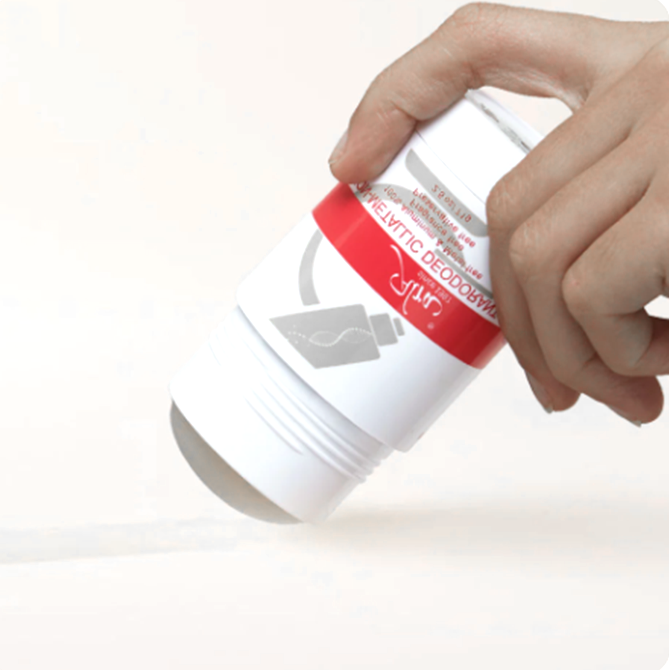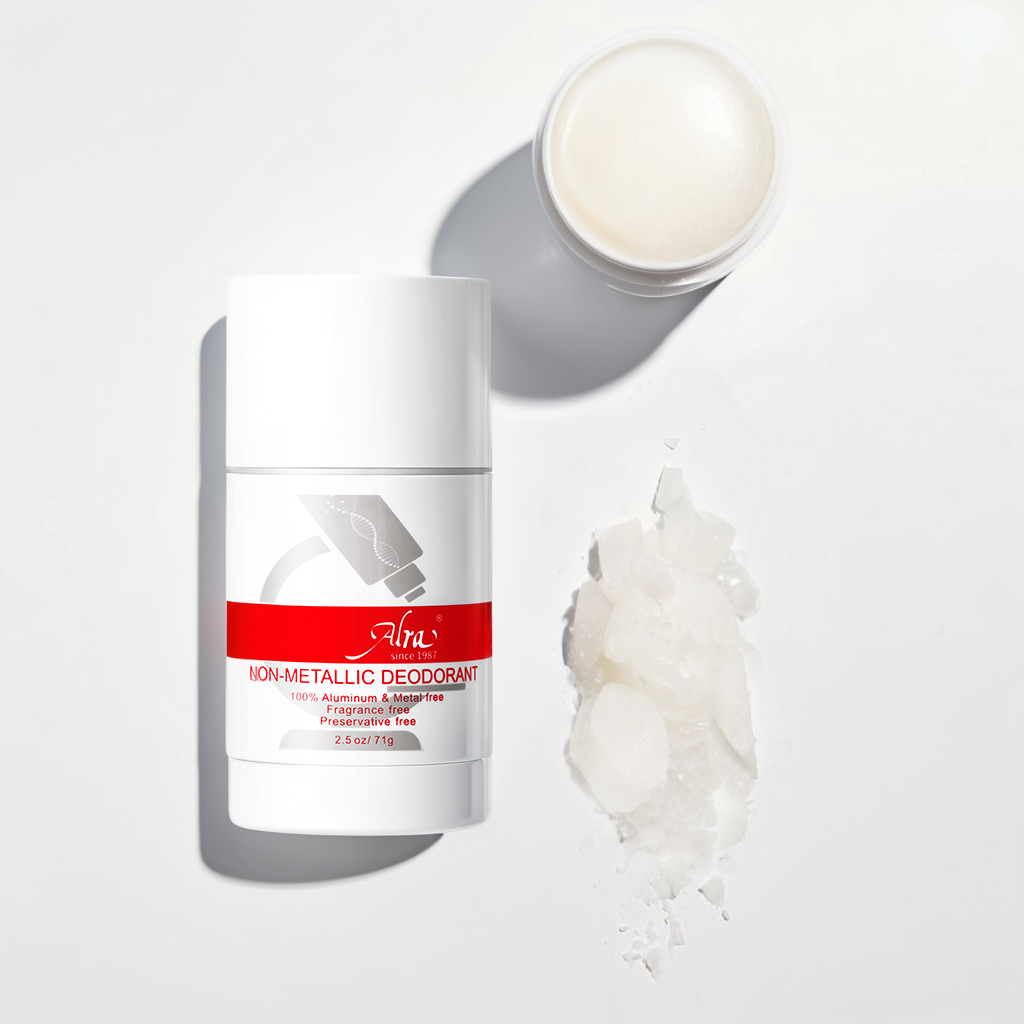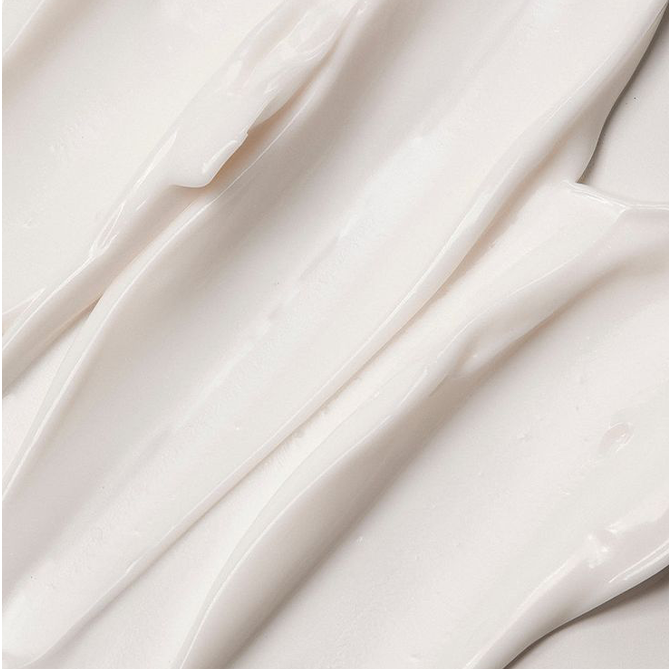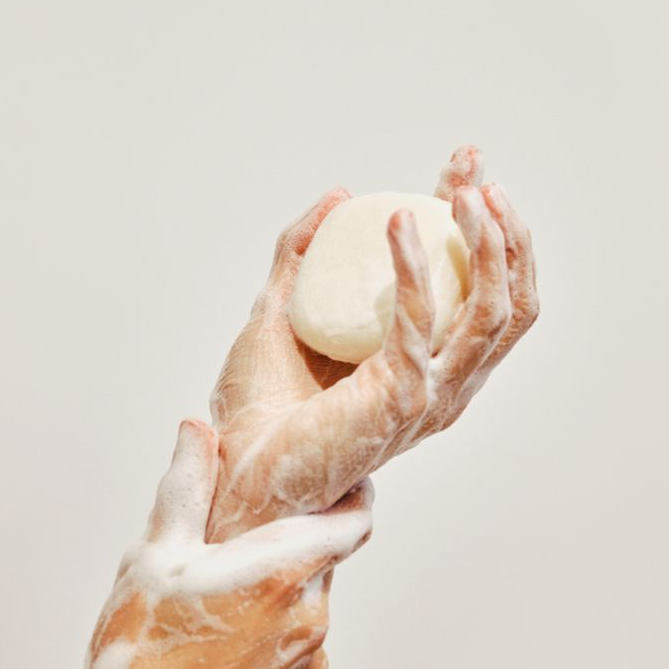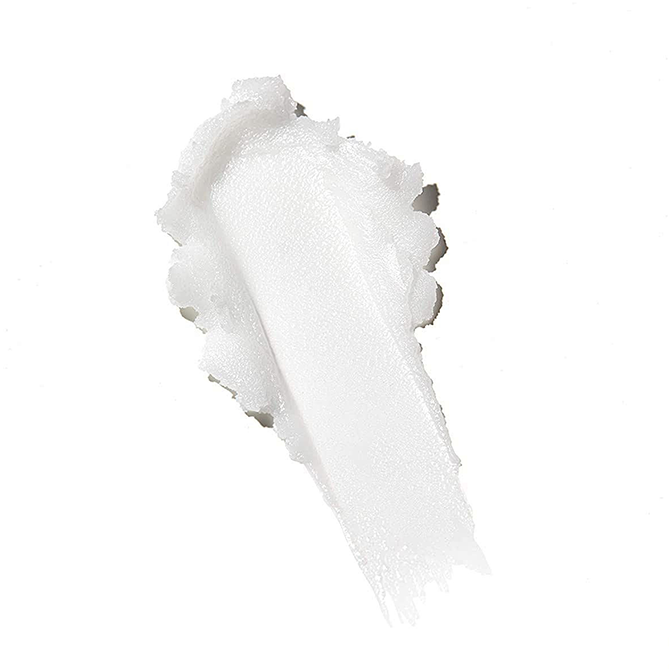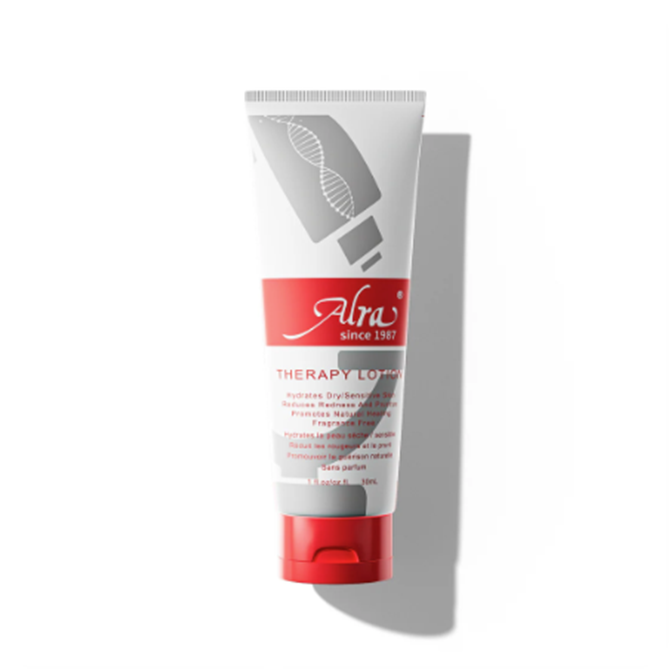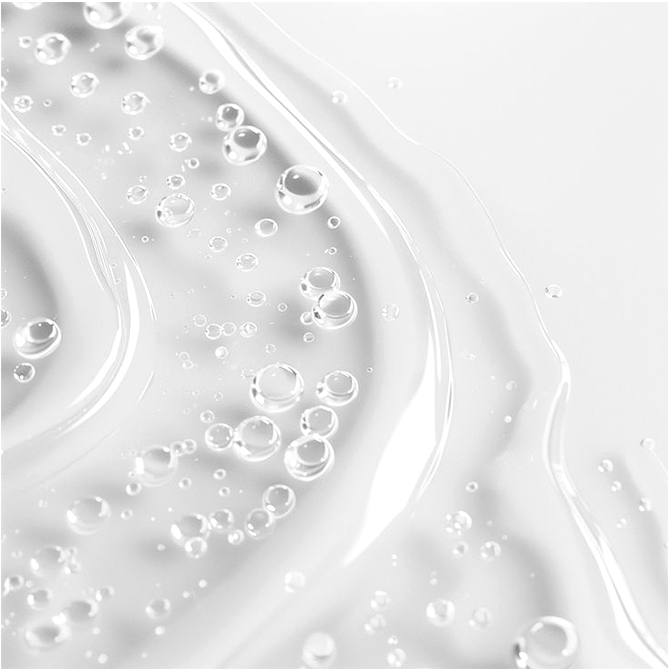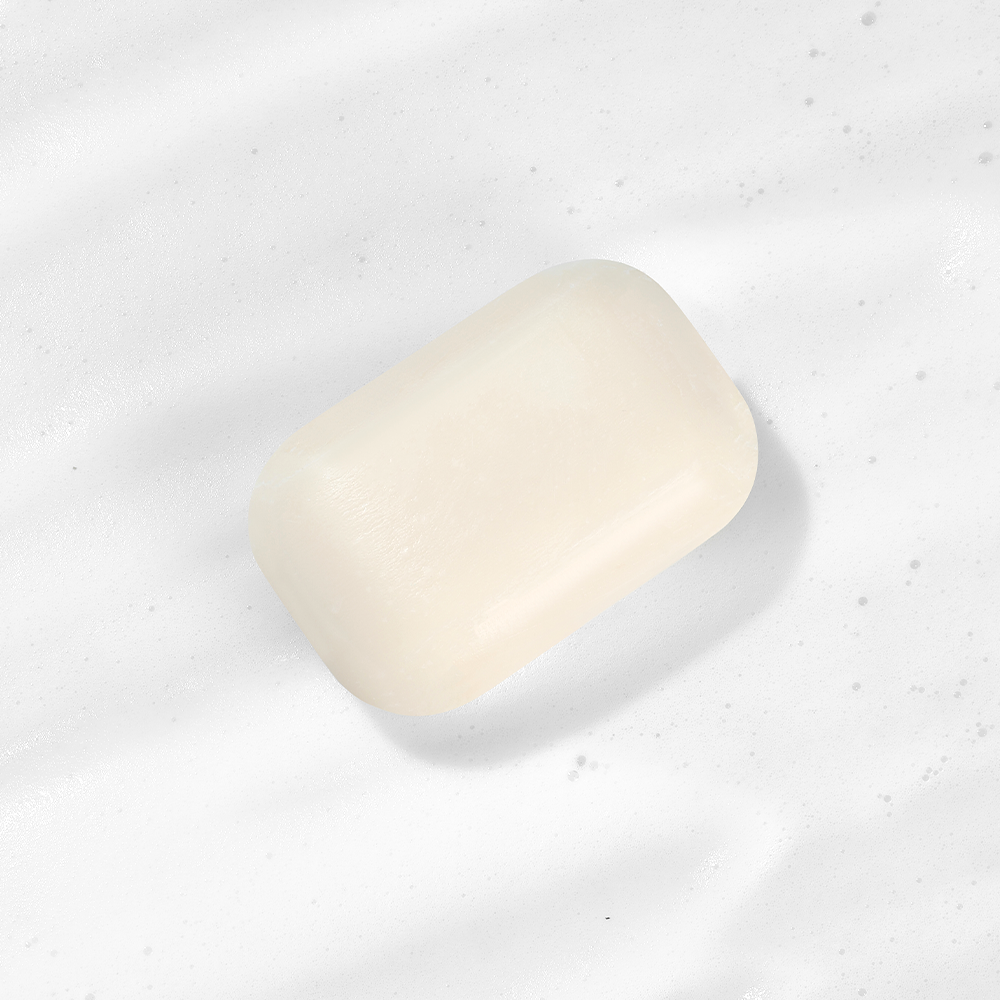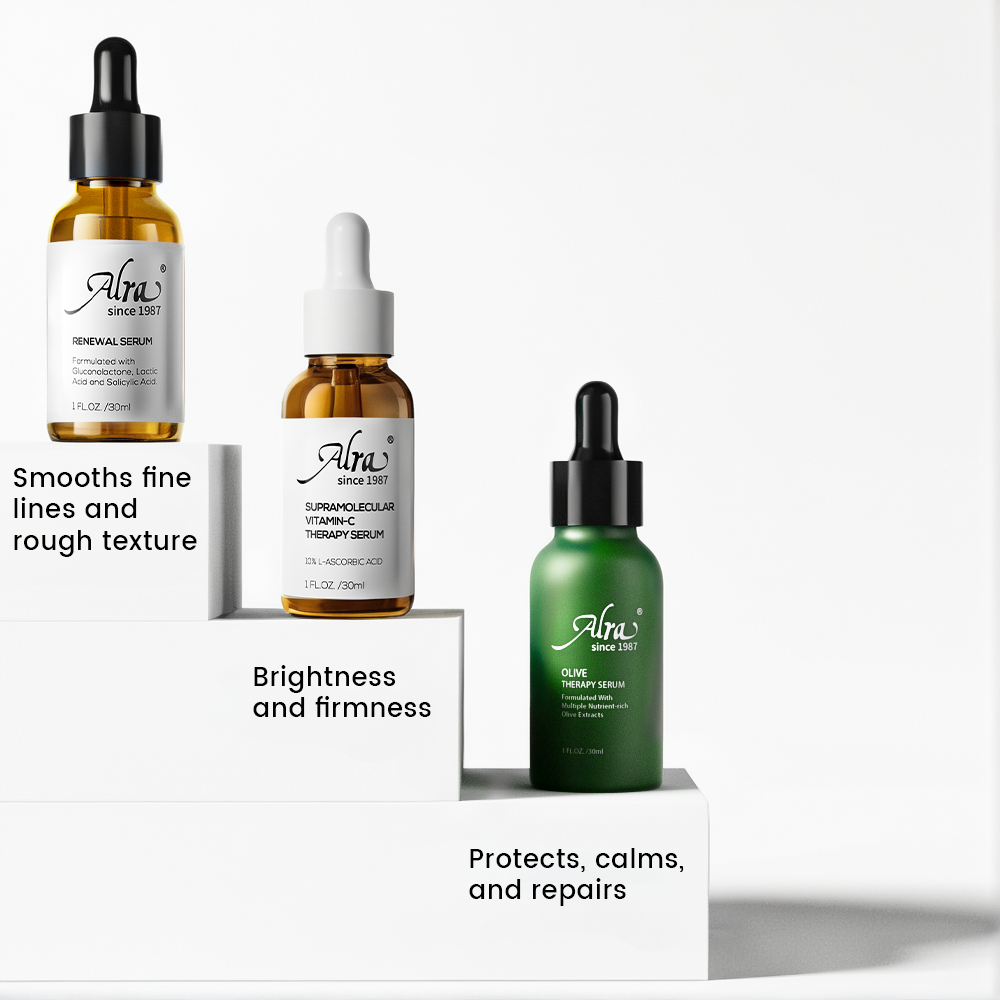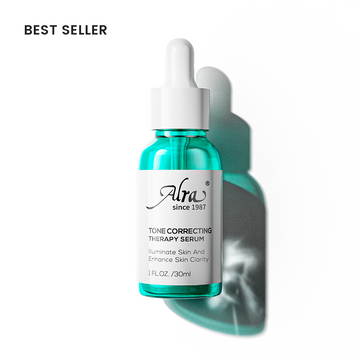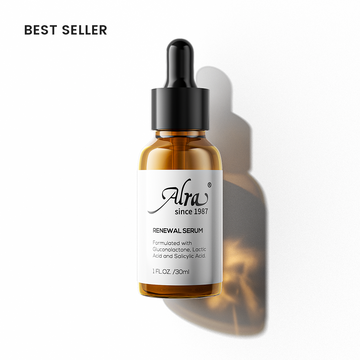Blog
Understanding the Different Types of Deodorant
Deodorant is a daily necessity for many people, providing a way to combat body odor and feel fresh throughout the day. As the market for personal care products expands, so do the categories of deodorants. Each type caters to different needs and preferences. Here, we explore the most common types of deodorant and how they differ. Different Types of Deodorant Stick Deodorants Stick deodorants are perhaps the most traditional and widely used form. They come in a solid form and are applied directly to the skin. They are easy to apply, typically leave no residue on clothing, and are available in a wide range of scents. Some stick deodorants can leave white marks on dark clothing, and those with sensitive skin might find certain formulas irritating. Roll-On Deodorants Roll-on deodorants have a liquid consistency and are applied using a rolling ball at the top of the bottle. They are easy to control during application and are absorbed quickly by the skin. They can feel wet upon application and might take a moment to dry. Spray Deodorants Spray deodorants come in aerosol cans or pump bottles and are sprayed directly onto the skin. They offer a quick, even application and typically dry faster than roll-ons. Aerosol sprays can be less environmentally friendly, and some people may be sensitive to the inhalation of spray particles. Gel Deodorants Gel deodorants have a clear, jelly-like consistency and are applied directly to the skin. They are less likely to leave marks on clothing and can feel refreshing upon application. Gel formulas may take longer to dry and can sometimes feel sticky. Natural Deodorants Natural deodorants are made from ingredients derived from natural sources and often avoid chemicals like aluminum and parabens. They are a good option for those with sensitive skin or for those looking to avoid certain chemicals. They might not be as effective as traditional deodorants in preventing odor for everyone. Clinical-Strength Deodorants Designed for those with excessive sweating, clinical-strength deodorants offer a stronger formulation. They provide enhanced protection against sweat and odor, often for longer periods. They can be more expensive and might contain stronger chemicals. Aluminum-Free Deodorants These deodorants do not contain aluminum, which is often used in antiperspirants to block sweat. Ideal for those who prefer to avoid aluminum due to skin sensitivity or personal preference. Alra Non-Metallic Deodorant is the answer to an aluminum-free deodorant that leaves your underarms feeling happy and without those unwanted white marks. Conclusion Choosing the right deodorant is a personal decision that depends on one’s skin type, lifestyle, and preferences. With a variety of types available, it's easier than ever to find a product that meets your needs while keeping you feeling confident and fresh. Remember to consider any skin sensitivities and environmental impact when making your choice.
Aprende másIs Aluminum In Deodorant Bad
When you pass by a pharmacy on the street or stroll through a department store, you'll be surrounded by a variety of deodorants and antiperspirants that are marketed as "aluminum-free" and "natural." This trend has become so ubiquitous that even celebrities and influencers on social media are promoting these products. Even some of the most popular brands are now selling aluminum-free products, giving consumers more options when shopping for deodorant, but it can also be confusing. So, what exactly is wrong with aluminum in deodorant? Is aluminum in deodorant bad? Is this a health issue worthy of concern? To find out, below, we're sharing all the necessary information about aluminum and deodorants to help you make an easier decision the next time you shop. Differences between Deodorant and Antiperspirant We tend to use the word "deodorants" to refer to anything we rub on our underarms, but in fact, there are significant differences between deodorant and antiperspirant. Deodorants are designed to only suppress body odor, while antiperspirants are designed to limit sweating. Deodorants and antiperspirants serve distinct purposes in personal hygiene, owing to their different scientific functions. Deodorants, particularly those without fragrance, are formulated to tackle body odor. This odor primarily arises from bacteria breaking down sweat on our skin. Rather than reducing sweat itself, deodorants focus on preventing bacterial growth and covering up the smell. They commonly use antimicrobial agents to create an environment that's unfriendly to bacteria. In contrast, antiperspirants are specifically designed to curtail or stop sweating, particularly in sweat-prone areas like underarms. They utilize aluminum-based compounds such as aluminum chloride or aluminum zirconium trichlorohydrex gly. These compounds temporarily clog the sweat ducts in the skin, significantly lowering the amount of sweat that reaches the skin's surface. Due to their effect on bodily functions, antiperspirants are often classified as over-the-counter drugs in various regions. The importance of making this distinction lies in the fact that when we talk about aluminum in deodorant, we are usually referring to antiperspirants. Antiperspirants (sometimes) contain aluminum salts that help block pores, so you don't sweat as much. On the other hand, deodorants do not contain aluminum and do not stop you from sweating. They simply reduce body odor by using fragrances or antimicrobial compounds. The Harm of Aluminum to Health When talking about aluminum in antiperspirants, 2 major health concerns are often mentioned: Alzheimer's disease and breast cancer. Aluminum and Alzheimer's disease In the 1960s and 1970s, attention was raised to aluminum's potential link to Alzheimer's disease, a degenerative brain disease. Keith Fargo, director of scientific programs and outreach for the Alzheimer's Association, explained that this suspicion has prompted concerns about exposure to aluminum through everyday items such as kitchen utensils, beverage cans, antacids, and antiperspirants. By 1985, concerns were heightened when a study further explored the link between aluminum and Alzheimer's disease. Schuler noted that researchers have found higher levels of aluminum in the brains of people with Alzheimer's disease. Multiple studies have been conducted since then; one study done at least in 1990 did show some link between the two. The study tracked aluminum exposure in 130 Alzheimer's patients, but its accuracy has been called into question because it relied on data provided by others on the patients. Because this study was deemed unreliable, experts today generally believe there is no definite link between aluminum and Alzheimer's disease. Aluminum deodorant and breast cancer Concerns about breast cancer risk are largely related to the proximity of the armpits to the breasts. Research shows that many breast cancer cases occur in the upper outer quadrant of the breast, the part closest to the armpits. There are concerns that when using underarm antiperspirants, ingredients such as aluminum may be absorbed into the skin or enter the body through cuts caused by razors. In theory, these components can enter the lymph nodes and then travel to the breast. Meanwhile, there's another concern: Because aluminum can clog sweat glands, the body may not be able to eliminate potential carcinogens that aren't removed when antiperspirants are used. In addition to aluminum, the effects of parabens, a preservative found in some deodorants, have also been raised in studies. However, research has been inconsistent on the link between aluminum-containing antiperspirants and breast cancer, according to the National Cancer Institute of the National Institutes of Health. For example, a study in 2002 did not find that using deodorant/antiperspirant increased the risk of breast cancer. However, a retrospective cohort study in 2003 found that high frequency and early initiation of antiperspirant/deodorant use were associated with early breast cancer diagnosis, but this study was questioned due to the lack of a non-breast cancer control group. Overall, experts currently conclude that a direct scientific link between deodorant/antiperspirant use and breast cancer has not been established, and further research is needed to establish cause and effect. The fact that there have been some older studies showing a link between aluminum and certain diseases does not mean that the scientific and medical community considers these links to be firmly established. The jury is still out on whether aluminum has a negative impact on health, which means you can continue to use antiperspirants that contain aluminum salts. After all, aluminum is the only active ingredient approved by the FDA to inhibit sweating. But to err on the side of caution, we recommend choosing an aluminum-free deodorant. How to Choose the Right Deodorant If you want to err on the side of caution and choose "natural" products, and you're wondering if your antiperspirant/deodorant contains aluminum, turn it over and look at the ingredients list. The active ingredient at the top may be listed as aluminum chloride hydrate or aluminum zirconium tetrachloroglycinate hydrate. There are many aluminum-free deodorants, that may clog pores at the root, but they are effective at preventing body odor. Alra Non-Metallic Deodorant offers a durable and residue-free solution that refreshes the skin while effectively combating sweat and odors throughout the day. Specifically designed to cater to skin that has experienced radiation therapy or is impacted by various skin conditions, Alra Non-Metallic Deodorant is formulated without aluminum, ammonia, alcohol, or parabens. While it's specially tailored for sensitive or irritated skin, this gentle deodorant is suitable and effective for all skin types. Click to Get 15% Discount!>>> But as you shop, remember: Just because a product is (or claims to be) natural, doesn't mean it's safe. As for effectiveness, deodorant (like all cosmetics) works differently on different people, so you may just need some trial and error to find one that works for you.
Aprende másWhat Causes Dark Underarms
Taking care of the skin under our arms has always been a part of personal care that we attach great importance to, particularly in the reason that our armpits have more susceptibility to dark spots and pigmentation than any other part of our body. Although not as visible as our faces, our underarms always need us to be focused on during the hot summer. The hot weather means those cute tank tops, swimsuits, summer dresses and short-sleeved shirts in your closet naturally explore your underarms. Many people desire to wear such outfits but hesitate due to concerns about dark underarms, which can be a source of self-consciousness. There are various solutions to address this worry, you may choose to undergo medical cosmetic treatments for underarm skin management, such as laser therapy. Alternatively, use products that are designed for lightening and covering dark underarms, which provides an effective but temporary solution. Knowing that you're not alone if you’re facing the dark underarms issues. Underarm hyperpigmentation is a common challenge faced by millions worldwide, stemming from various causes. What Causes Dark Underarms There are many causes of dark underarms, including skin conditions like hyperpigmentation or ingrown hairs, excessive sun exposure, shaving with a razor, and even poor hygiene or eating habits. Genetic & Medical Factors: Underarm discoloration can linked to genetics, hormonal changes during a natural event like pregnancy, changes in fluctuating hormone levels, or side effects from certain medications or health conditions. Another common cause is a lack of vitamin B3 (niacin), which helps maintain an even skin tone and treat inflammation. Conditions like polycystic ovary syndrome (PCOS) and factors like obesity and diabetes can also contribute to darkened underarms. Hair Removal Management: The underarm skin is sensitive due to numerous skin folds, making it prone to tiny wounds during shaving or other hair removal methods. These tiny wounds can become infected with bacteria or yeast, causing inflammation and changes in skin color. The less breathability than other parts of the underarm creates a conducive and safe environment for bacteria to grow, further contributing to pigmentation and potential skin inflammation. Skin Irritation: Using unsuitable deodorants, especially those containing alcohol and aluminum salts, can irritate underarm skin and lead to darkening. Aluminum, baking soda, parabens, alcohol, and other fragrances found in typical deodorants can irritate the skin and cause inflammation. This results in thickening and darkening of the armpits over time. Excessive sweating in this area can exacerbate this issue. Moreover, a lack of exfoliation can result in dead skin cell accumulation, leading to dull skin and increased pigmentation. Alra Non-metallic Deodorant’s completely clean formula, being aluminum-free, ammonia-free, paraben-free, and alcohol-free means this deodorant won't irritate underarms. Aluminum clogs sweat glands and cause skin irritation, and some studies have found aluminum to aid in estrogen production, which can be linked to the development of skin cancer. Clean ingredients are a valuable detail that many deodorants miss the mark on. In today's market, if a product isn't up to clean beauty standards, it most often contains harmful ingredients. Alra Non-Metallic Deodorant surpasses clean beauty standards, leaving other deodorants in the dust. Clothing Friction: Tight clothing can cause significant rubbing and friction in areas like the armpits, groin, elbows, and knees, which might increase skin irritation and contribute to inflammation or pigmentation. How to Prevent Dark Underarm To effectively address the dark underarms issue, a consistent, daily personal care routine matters a lot. Regularly Apply Sunscreen: Overexposure to the sun can cause the skin to darken, especially the individuals with fair skin. Before stepping out in the sun, make sure to apply sunscreen, even to your underarms, to minimize sun damage and prevent darkening. Keep the Area Clean: Maintain proper hygiene by showering daily with warm water and mild soap. Thoroughly dry yourself after bathing, as the moisture of underarms can foster bacterial growth there, potentially preventing underarms from darkening. Choose a Gentle Deodorant: When selecting a deodorant for combating our body odor, scrutinize the ingredient list. Avoid ingredients like aluminum and alcohol, for these ingredients may cause your underarms irritation. If you have sensitive skin, opt for a fragrance-free, moisturizing deodorant. In a world where most deodorants contain harmful ingredients, such as aluminum and parabens, you need a deodorant that soothes the skin and contains the most nourishing ingredients to leave underarms refreshed and protected from moisture, heat, and unwanted smells. Alra Non-Metallic Deodorant’s long-lasting and residue-free formula invigorates the skin and battles sweat and odors all day long. Alra Non-Metallic Deodorant was developed with the promise of alleviating skin that has undergone radiation therapy or is affected by skin diseases. This ammonia-free, alcohol-free, and paraben-free deodorant has been developed for sensitive or irritated skin, but it works for all skin types as well. Manage Laser Hair Removal: If constant shaving and waxing are causing issues, consider laser hair removal to keep your underarm hair in check for an extended period. Laser hair removal not only eliminates hair at the root but can also address dark spots caused by hair beneath the skin. Ensure you visit a reputable skin clinic for this treatment, as not all clinics cater to diverse skin tones and hair types. Consult with a board-certified dermatologist to determine the most suitable laser treatment for your underarms. Minimize Friction with Fabrics: Avoid unnecessary friction in the underarm area by steering clear of heavy, rough, or itchy fabrics. Opt for breathable materials like cotton, as they provide proper ventilation to your underarms. Conclusion In summary, dark underarms can be attributed to a variety of factors, and understanding the causes is crucial to effectively addressing and preventing this common problem. Factors such as excessive sun exposure, poor hygiene, harsh deodorants, frequent shaving or waxing, and genetic predispositions can cause darkening of the skin under the arms. By proactively addressing the underlying causes and implementing these preventive measures, individuals can achieve brighter, healthier underarms, thereby increasing their overall confidence and well-being. Remember, maintaining a consistent skincare routine and seeking professional advice when necessary are key steps to achieving desired results and preventing underarm darkening.
Aprende másScalp Acne: Causes and Treatment
Scalp pimples, a type of acne that occurs on the scalp due to the presence of hair, can be particularly uncomfortable and difficult to treat. Scalp acne are same as facial acne which is caused by clogged hair follicles, but hair shampoos and conditioners often exacerbate scalp acne. These acne on the scalp are general whiteheads or pustules on the skin of the head where hair grows and may be itchy and painful due to clogged pores or inflamed hair follicles. Specific treatment may include changing your hair care habits or the shampoo products you use or taking medications to help acne go away. Differences between Scalp Acne and Acne in Other Areas Acne can occur on various parts of the body, including the scalp, face, back, and chest. While the basic mechanisms behind the development of acne in different body areas are similar, there are some specific differences in how acne appears and is affected by the environment and care practices of each area. Scalp Acne Hair follicles: The scalp has many hair follicles, which are easily clogged by hair care products, oil, and sweat. Hair care products: Hair gels, sprays, and conditioners can cause scalp pores to build up and become clogged. Less obvious: Scalp acne may be less obvious due to hair coverage, but may be more painful due to tight scalp skin. Irritation from hair care practices: Frequent combing, tight hairstyles, or heat styling can irritate the scalp and worsen acne. Acne on other parts of the body (face, back, chest) More exposed to the environment: These areas are more frequently exposed to external factors such as dirt and pollution. Skin thickness and oiliness: The skin on the face, back, and chest may have different thicknesses and levels of oil production. For example, faces typically have more sebaceous glands. Clothes and friction: Tight clothes and constant friction can worsen acne on the back and chest. More visible: Acne on the face, back, and chest is often more visible, which can have psychological and social consequences. While acne is common on the face, chest, and back, pimples on the scalp are less common. Facial acne affects nearly 80% of people between the ages of 11 and 30. However, scalp acne is not limited to a specific age group and is more common in adults. Types of Scalp Acne Scalp acne, similar to acne found on other parts of the body, can come in various forms. Here are some common types: Mild Acne (Comedones): These are often the first stage of scalp acne. Comedones can be either open (blackheads) where the pore is clogged with a combination of sebum, dead skin cells, and dirt, making the surface appear black, or closed (whiteheads), where the pore is clogged but covered by a thin layer of skin, giving a white appearance. Inflammatory Acne: This type includes: Papules: Small, red, raised bumps caused by infected hair follicles. Pustules: Similar to papules, but filled with pus. They are often red at the base with a white or yellow top. Cystic Acne: Deep, painful, pus-filled lesions that can cause scars. This type of acne occurs when clogs occur deep within the follicle, leading to inflammation and infection. Folliculitis: Although technically not acne, folliculitis is often mistaken for it. It's an infection of hair follicles, usually caused by bacteria or fungal organisms. It presents as small, red, and sometimes painful bumps. Nodular Acne: Large, hard bumps under the skin's surface. These lesions are often painful and can merge to form larger, deeper nodules. The severity and treatment of scalp acne can vary. Mild acne might be treated with over-the-counter remedies, while more severe forms like cystic acne often require medical intervention and prescription medication. Good hair and scalp hygiene can help prevent scalp acne, but it's always best to consult a dermatologist for a proper diagnosis and treatment plan. Causes of Each Type of Scalp Acne The causes of different types of scalp acne are often similar, with variations depending on the severity and specific nature of the acne. Here are the causes associated with each type: Mild Acne (Comedones): Blackheads and Whiteheads: These occur when hair follicles on the scalp become clogged with sebum (oil), dead skin cells, and sometimes bacteria. The clog close to the surface of the skin results in whiteheads, while exposure to air oxidizes the material in the follicle, creating blackheads. Inflammatory Acne (Papules and Pustules): Bacterial Infection: When the clogged follicles get infected with bacteria, it leads to inflammation, resulting in red, swollen bumps (papules) or pus-filled bumps (pustules). Irritation and Inflammation: Hair products, sweat, or even scratching can irritate the follicles, leading to inflammation and infection. Cystic Acne: Deep Follicular Blockage: This severe form of acne occurs when the blockage happens deep within the hair follicles, causing a large, inflamed cyst. Hormonal Fluctuations: Hormonal changes, especially those related to androgens, can increase sebum production and lead to more severe forms of acne. Genetic Factors: A genetic predisposition can make some individuals more susceptible to cystic acne. Folliculitis: Bacterial or Fungal Infection: Folliculitis is often caused by a bacterial (often Staphylococcus aureus) or fungal infection. Irritation from Hair Products: Certain hair care products can irritate the scalp and hair follicles, leading to folliculitis. Friction from Clothing or Accessories: Hats, helmets, and headbands can create friction and sweat buildup, contributing to folliculitis. Nodular Acne: Severe Blockages: Similar to cystic acne, nodular acne is caused by deep blockages of sebum, dead skin cells, and bacteria in the hair follicles. Intense Inflammation: The body's immune response to these blockages leads to intense inflammation, resulting in large, painful nodules. Common factors contributing to all types of scalp acne include poor hygiene, excessive sweating, hormonal imbalances, stress, certain medications, and a diet high in sugary, fatty, or dairy products. It's important to note that while these are common causes, individual factors can vary, and it's always best to seek a professional diagnosis for targeted treatment. How to Choose the Right Shampoo for Scalp Acne Choosing the right shampoo for scalp acne involves considering several factors to ensure it effectively treats the condition without causing further irritation. Alra Mild Conditioning Shampoo is a gentle oil-control shampoo that provides much-needed relief to your hair and scalp. Its microbial film segmentation technology can effectively break down the biofilm of mainstream bacteria and fungi that cause scalp acne, inhibit the excessive proliferation of bacteria and fungi, maintain the scalp microecological balance, and thereby improve oiliness, itching, and acne. , lipid particles, and sensitive scalp problems. Additionally, Alra Mild Conditioning Shampoo uses the exclusive 5-fold surfactant system from Alra Laboratories. It is not the traditional sulfate surfactant or amino acid surfactant. It effectively removes excess oil while being gentle. It can significantly refresh the hair and keep your hair fluffy. Alra Shampoo contains key ingredients: rosemary oil, panthenol, and aloe vera leaf juice that promise you product safety, it is biologically targeted at the scalp acne, is ideal for people with sensitive scalp, as well as for cancer patients during or after cancer treatment, such as radiation therapy.
Aprende másHow to Make Soap: A Step-by-Step Guide
Soap making is an enjoyable and rewarding craft that allows you to create products that are both functional and artistic, with endless customization possibilities. Whether you want to make soap for personal use, as a thoughtful gift, or to start a small business, this guide will help you understand the basics and get started. To learn how to make soap, first, choose one method from four. The most popular 2 methods are "melt and pour" and cold working. Other methods are more advanced methods that have advantages, disadvantages, and variations. Melt and Pour: This simple process involves melting pre-made bars of soap and adding your fragrance. Cold Method: The cold method is the most common way to make soap from scratch using oil and lye. Hot Process: A variation of the cold process method, hot processing involves making the soap in a slow cooker or oven. Remixing: This method grinds and remixes batches of inferior homemade soap. Safety First Soap making involves handling lye (sodium hydroxide), a corrosive substance that can cause severe burns. Safety is paramount, so make sure: Wear protective gear: gloves, goggles, and long sleeves. Work in a well-ventilated area. Keep vinegar nearby to neutralize any spills. Never add water to the lye; always add lye to water to prevent a dangerous reaction. Basic Guide to Making Soap Soap is the result of a basic chemical reaction between fat or oil and lye. The process of achieving a chemical reaction is called saponification. By carefully choosing a combination of quality oils, adding your favorite fragrance or essential oil, and incorporating lively colorants, your handmade soap suddenly takes on a charming, rustic character. Ingredients and Materials Lye (sodium hydroxide): a key ingredient in soap making. Water: Distilled water is best. Oil/Fat: Such as olive oil, coconut oil, palm oil, etc. Perfume/Essential Oil (optional): for fragrance. Coloring agent (optional): used to color soap. Safety equipment: gloves, goggles, long-sleeved clothes. Equipment: digital scale, thermometer, immersion blender, soap mold, stainless steel pot, plastic or silicone spatula. Steps to Making Soap Making soap using a melt-and-pour base is safe, easy, and convenient. The base has already gone through the saponification process, so there is no need to deal with lye. First, purchase pre-made, colorless, unscented soap "base" blocks from a craft store or soap supplier. Then melt the soap base in the microwave or double boiler. Once the soap is completely melted, you can add fragrances, colors, and additives. Pour the mixture into the mold and once the soap has hardened it is ready to use. Step 1: Prepare the Lye Solution: Measure water and lye separately using a digital scale. Slowly add lye to the water (never the reverse), stirring until dissolved. The solution will heat up and release fumes. Let it cool to about 100-110° Step 2: Prepare Oils/Fats: Measure and melt the oils/fats together, then cool to 100-110°F. Step 3: Mixing: Once both the lye solution and oils are at similar temperatures, slowly pour the lye solution into the oils. Use an immersion blender to mix until it reaches "trace" (when the mixture is thick enough to leave a mark when dripped on itself). Step 4: Additives: Add any fragrances, essential oils, or colorants at this stage. Step 5: Pour into Molds: Pour the mixture into soap molds. Tap the mold to release any air bubbles. Step 6: Curing: Cover the mold with plastic wrap and wrap it with towels for insulation. Unmold after 24-48 hours and cut into bars if needed. Cure the soap for 4-6 weeks before using, turning occasionally. Coloring Recommendation White and clear glycerin bases are very popular in soap making. For soap-making enthusiasts looking for a luxurious experience, try goat's milk, olive oil, or shea butter as a base. To make melting easier, cut the soap base into smaller pieces first. Melting Method Microwave melting method: Place the cut soap base into a microwave-safe bowl and stir every 30 seconds until it is completely melted into a smooth liquid. Double boiler method: Heat in a double boiler over low heat, stirring constantly until it becomes a smooth liquid. Added Colorants, Flavors and Additives While the soap base has cooled to 120 degrees Fahrenheit, add your choice of colorants, fragrances, and other additives. Pour into Mold Pour the mixed soap solution into the mold and wait a day until the soap is completely hardened and dry. Then remove from the mold and your soap is finished. Key Soap-Making Tips The right timing for additives During the soap-making process, additives may sink to the bottom of the container due to the thinness of the melted soap base. To avoid this, it is recommended to allow the soap base to cool slightly before adding additives. This ensures that the additives are evenly distributed in the soap for better results. The importance of temperature control In soap making, controlling temperature is crucial. If the temperature of the soap base is too high, it can overheat or even burn, which can make the soap mixture thick and difficult to flow. Therefore, it is very important to ensure that the soap mixture is at the right temperature before pouring it into the mold to prevent the soap from becoming too dense or sticky, affecting the quality and appearance of the final product. By precisely controlling the timing of additive additions and the temperature of the soap mixture, the quality and aesthetics of the soap can be significantly improved. Recommended Additives Sandalwood powder or dried calendula petals: These additives are especially ideal when making melt-and-pour soaps. Not only do they add to the scent and beauty of the soap, but they also enhance the experience of using it. Caution in the Use of Herbs: Be careful when choosing herbs as additives. Herbs may cause color changes in the soap, affecting the appearance of the final product. It is recommended to test the effectiveness of herbs in soap beforehand. Other Additive Options: Consider using diverse additives such as exfoliants, fruit seeds, or milk powder to increase the functionality and appeal of your soap. The addition of these additives is an important step in making melt-and-pour soap, enriching the soap's properties and effects. Always be safe when working with any material, especially when working with hot soap bases. It’s equally important to have fun creating during the making process, which helps inspire innovative and personalized soap designs. Overall, choosing the right additives and mastering the right techniques can go a long way toward improving the quality and beauty of your homemade soap. Conclusion Soap making may seem cumbersome at first, and some people worry about coming into contact with lye, but once you get used to it, making soap becomes a fun and creative process. Not only do you get a product that perfectly suits your preferences, but you also get the satisfaction of making it yourself. So, gather your materials, follow the steps below, and start your soap making journey! Remember, the key to making great soap is practice and experimentation. Don’t be afraid to try different essential oils, scents, and color combinations. Happy soap making!
Aprende másHow to Treat Irritated Armpits?
Itchy armpits are a common skin problem, especially in hot summer, where your irritated armpits can be bothered and may even make you look embarrassed in public. Underarms are an underrated part of the body when it comes to having necessary protection from abrasive and irritating ingredients. Often referred to as armpit rash, which is not dangerous, but can certainly make you uncomfortable, ranging from itchy to painful. If you have persistent itchy underarms along with other symptoms, it is best to see a doctor to figure out what's happening. What Causes Armpits Itchy? Sweating: The armpits of the human body contain a large number of sweat glands, and the special characteristics of the underarms will cause the sweat can not evaporate in time. This lingering sweat mixed with some of the dead skin cells in your armpits, then causes inflammation and ultimately armpits itchy. Additionally, your armpits are also one of the warmest parts of your body, which sets moist conditions for bacteria and fungus to grow, further causing the itching. Hair: Armpit hair begins to grow during puberty. The growing process can irritate the underarm skin and cause itchiness. Frictional contact: When we perform daily activities such as walking and waving, our armpits skin will frequently come into contact with the skin on the side of the body. Repeated friction will cause the underarm skin to feel itchy. When you wear a shirt, the frequent contact between your skin and clothes can also irritate the armpits making you feel itchy. Each person's body is different. If the above factors cause your armpits to itch and you experience other symptoms, such as a rash on your skin, please contact your doctor for better treatment in time. Rashes in the armpits can be mild or severe, transient or chronic, and treatment is at your discretion. It may take a long time for treatment to completely resolve the problem of irritated armpits, but avoiding the factors mentioned above will go a long way toward relieving your itchy armpits. Can Deodorant Cause Irritated Armpits? Aluminum, baking soda, parabens, alcohol, and other fragrances found in typical deodorants can irritate the skin and cause inflammation. This results in thickening and darkening of the armpits over time. These ingredients may be found in some soaps, lotions, and laundry detergents found in your home. Try changing some of the products you use at home or avoiding products with harsh ingredients to relieve your itchy armpits. How to Treat Irritated Armpits? Medical Treatment Healthcare providers can help you determine the cause of itchy armpits and provide treatment to relieve symptoms. Treatment options vary depending on the cause but may include: taking antihistamines, antibiotics, antifungal or immunosuppressant medications. Use Topical Steroids on the Skin. Adjust the dosage of any medications you are currently taking as recommended by your provider. Here are some things you can do at home to treat and prevent itchy armpits: practice proper hygiene and bathe or shower daily, especially after sweating. Use soap and water under your arms. Daily Skincare & Personal Care Keep your skin hydrated by drinking plenty of water and using a moisturizer regularly on your skin. Switch your skin care products (especially deodorant) to hypoallergenic, unscented, or natural products. Do not shave until symptoms disappear or until you replace your razor blade. Avoid clothing made of materials that irritate your skin. This is why Alra Skincare can, not just any deodorant do, Alra Non-Metallic Deodorant’s aluminum-free, long-lasting, and residue-free formula invigorates the skin and leaves you ready to take on whatever the day brings.
Aprende másCan You Use Lotion on Face?
Have you ever been in a situation where your cheeks are dry after a shower and you realize you’ve run out of facial moisturizer? There’s this bottle of your usual lotion sitting on your desk, and you wonder if you could apply it too. On the face? It's a common query, especially when we want to simplify our skin care routines or save a little money. But, please remember, your skincare routine is what you make it, and before you make it a regular practice, let’s dive into the real differences between body lotion and facial moisturizer. What Sets Facial Moisturizers and Body Lotion Apart? Conventional Body lotions often contain moisturizing ingredients, such as butters or oils, to lock in moisture. However, these heavier ingredients may exacerbate skin problems like acne on your face. You can also choose a body lotion based on your attraction to body lotion scents, but these scents can easily irritate delicate facial skin. Facial lotions tend to contain more active ingredients that can help address skin concerns. These ingredients tend to cost more, so they are often not included in body lotions. Body lotions are formulated to address the needs of the thicker, less sensitive skin on our bodies. They often contain heavier, more fragrant ingredients and may not address specific facial skin concerns like acne, oiliness, or fine lines. Facial moisturizers, however, are designed to be lighter, non-comedogenic (meaning they won't clog your pores), and cater to a wider range of skin types and issues. Because facial skin usually spends more time exposed to elements such as heat, cold, or the sun’s UV rays. Therefore, many facial products serve a dual purpose: they help protect facial skin from potential damage while also improving any skin concerns you may have. In other words, they may be too tough or aggressive for the sensitive skin on your face. Creams, on the other hand, are specially designed to protect delicate skin. Many facial skin care products also serve more specific purposes, such as treating acne or reducing redness or discoloration, dark spots, or wrinkles. These skin problems tend to be more common on the face due to its thinner skin and more sebaceous glands. In fact, you'll notice that many facial products aren't lotions at all. Instead, they are creams. "Creams are typically more intense, while lotions are more water-based and liquid," explains Dr. Anna Chacon, a dermatologist in Weston, Florida. What Lotion Is Okay to Use on Your Face? In a pinch, a body lotion can be used on the face, especially if it's formulated for sensitive skin and is fragrance-free. Alra Therapy lotion is an excellent body moisturizer that is well-suited for all skin types. It has a natural formula, free of harsh chemicals. It is paraben-free, alcohol-free, and petroleum-free, which makes it a perfect choice for sensitive skin. It is fragrance-free and cruelty-free i.e., no animals were harmed while testing this product. Alra Therapy lotion offers reliable and calming relief from dry, itchy, and inflamed skin caused by various skin disorders such as dermatitis. It minimizes skin sensitivity and prevents irritation for many patients undergoing cancer treatments such as radiation or chemotherapy, without interfering with treatment.
Aprende másUnderstanding Body Odor and Choosing Between Deodorants and Antiperspirants
Speaking of personal hygiene, understanding what is body odor and how it is generated, and the difference between deodorant and antiperspirant is crucial for choosing the right product for your needs. What is Body Odor? Body odor is what you smell when your sweat comes in contact with the bacteria on your skin. There are two types of sweat glands: eccrine and apocrine, apocrine sweat glands are mainly located in the armpits and navel fossa of our body. When we sweat, the apocrine glands secrete a small amount of lactic acid, glycoproteins, amino acids, electrolytes and other components, which accelerate the reproduction and fermentation of skin microbiota. During the metabolism process of microorganisms, they will produce a large amount of short-chain fatty acids and biogenic amines, and these two substances are the main sources of the "special" odor in the human body. That is what we call “body odor”. So sweat itself doesn’t smell, but when the bacteria on your skin mix with your sweat, it causes an odor. Differences between Deodorant and Antiperspirant Deodorants and antiperspirants, while both used for personal hygiene, function differently based on their distinct scientific mechanisms. Deodorants, especially the non fragrance deodorant, aim to combat body odor, which primarily originates from the bacterial breakdown of sweat on the skin. Their action is not to totally reduce sweating but rather to inhibit bacterial growth and mask odor. This is typically achieved through antimicrobial agents, creating an environment hostile to bacteria. On the other hand, antiperspirants are designed to reduce or prevent sweating, particularly in areas like armpits. They contain aluminum-based compounds (e.g., aluminum chloride or aluminum zirconium trichlorohydrex gly) that temporarily block the sweat ducts in the skin. This blockage significantly reduces the amount of sweat that reaches the skin's surface. Due to their action of altering bodily function, antiperspirants are often regulated as over-the-counter drugs in many regions. Don’t Know Which One to Choose Benefits of Deodorant: Sweating is your body’s natural response, but it's not the sole cause of body odor. Rather, it's the mix of sweat and skin bacteria that produces an unpleasant scent. Even if you can get past the visual of sweat, the odor from armpitsmay embarrass you. Rather than stopping sweat like antiperspirant, deodorant works on the bacteria on the skin to stop the odor escaping from your armpits biologically. A quality deodorant not only tackles body odor but also spreads a fresh, natural scent that doesn't clash with other fragrances,serves itself as a non fragrance deodorant. Moreover, using deodorant can boost your confidence and alleviate feelings of self-consciousness. This is especially beneficial during physical activities like gym workouts or competitive sports, as it helps you focus on your performance without the distraction of worrying about body odor. Benefits of Antiperspirant: Antiperspirants may have the added benefit of acting as a deodorant because of how the product works. When antiperspirant blocks sweat glands, it also prevents odors from escaping, reducing the unpleasant odor that occurs when you sweat. However, antiperspirants often contain aluminum compounds. According to the article Aluminium, Antiperspirants and Breast Cancer published in the Journal of Inorganic Biochemistry, there is increasing evidence that the chemical constituents of underarm and body cosmetics applied to the underarm and breast area may be involved in the rising incidence of breast cancer. Aluminum salts, such as aluminum chlorhydrate (ACH), are the active ingredient of antiperspirants in these cosmetics. So the benefits of using antiperspirant are temporary, and will have some impact on the body, although bathing or washing the body can remove the antiperspirant and restore the perspiration capacity of the affected glands. But be sure to think carefully when choosing an antiperspirant. Choosing the Right Deodorant Alra non-metallic deodorant is a long-lasting, effective, mild light fragrance that suits all occasions and doesn't interfere with the use of any other perfume, is free from any toxic, metallic ingredients, and 100% no-residue guarantee. Alternatively, if you want to talk to one of our Customer Care to inquire, they can be reached at (888) 508-ALRA (2572) or email CustomerCare@alra.com. References: Jingxi, J. (2019). The Secret War of Cells. Science Enlightenment, (05), 41. D. Darbre.(2005).Aluminium, Antiperspirants and Breast Cancer. Journal of Inorganic Biochemistry, Volume 99, Issue 9 Pages 1912-1919. https://www.sciencedirect.com/science/article/abs/pii/S0162013405001613
Aprende másTratamiento de la dermatitis por radiación y el jabón que utiliza
Es importante que consideres tu rutina de cuidado de la piel en este momento. Jabón resistente a la radiación, elaborado específicamente para personas sometidas a quimioterapia y El tratamiento de la dermatitis por radiación es una opción inteligente.
Aprende más

